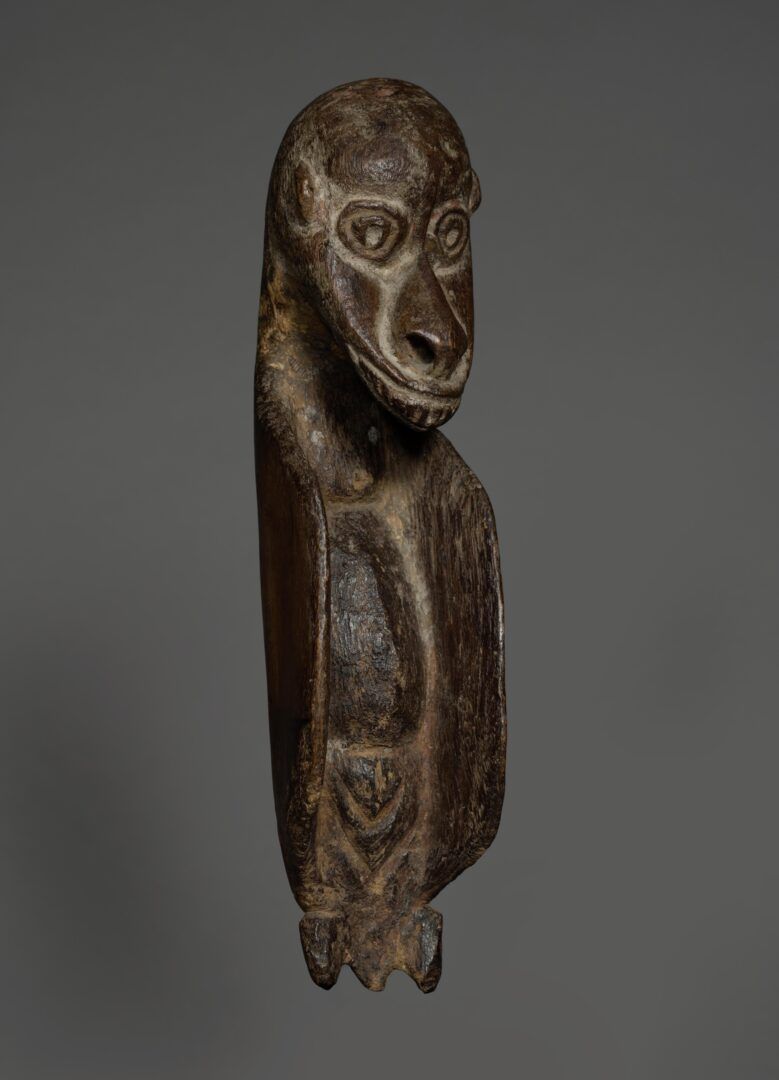
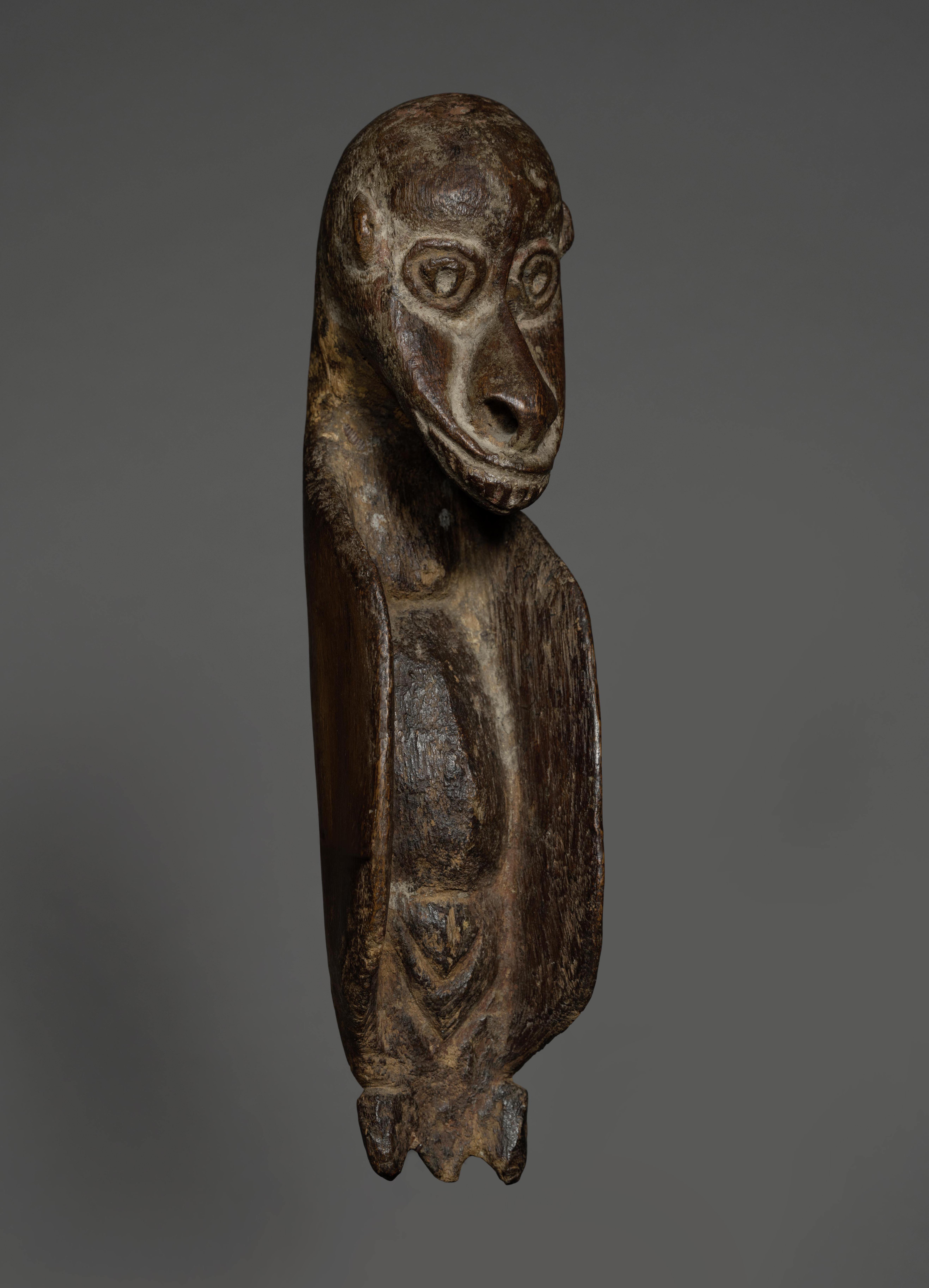
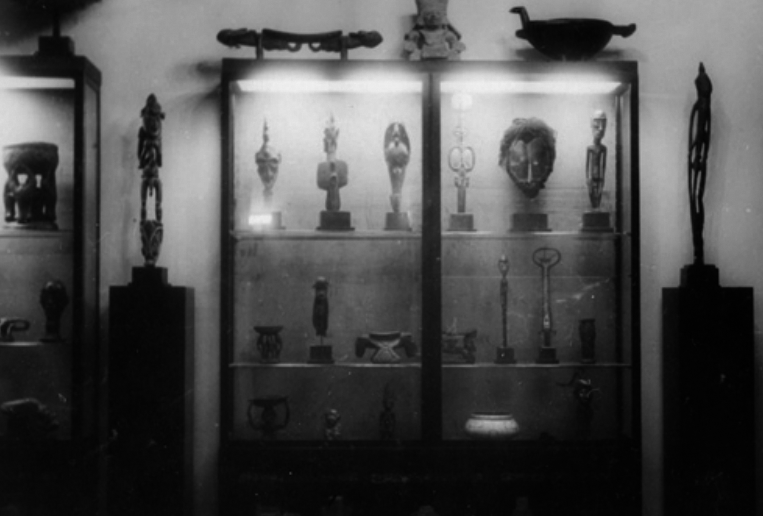

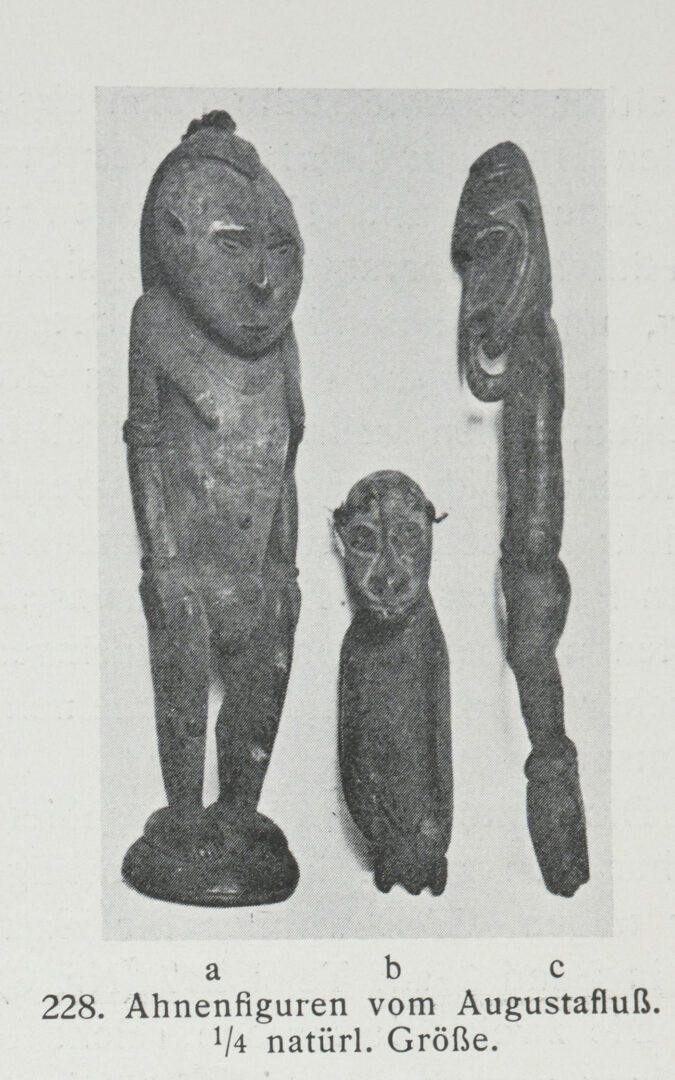
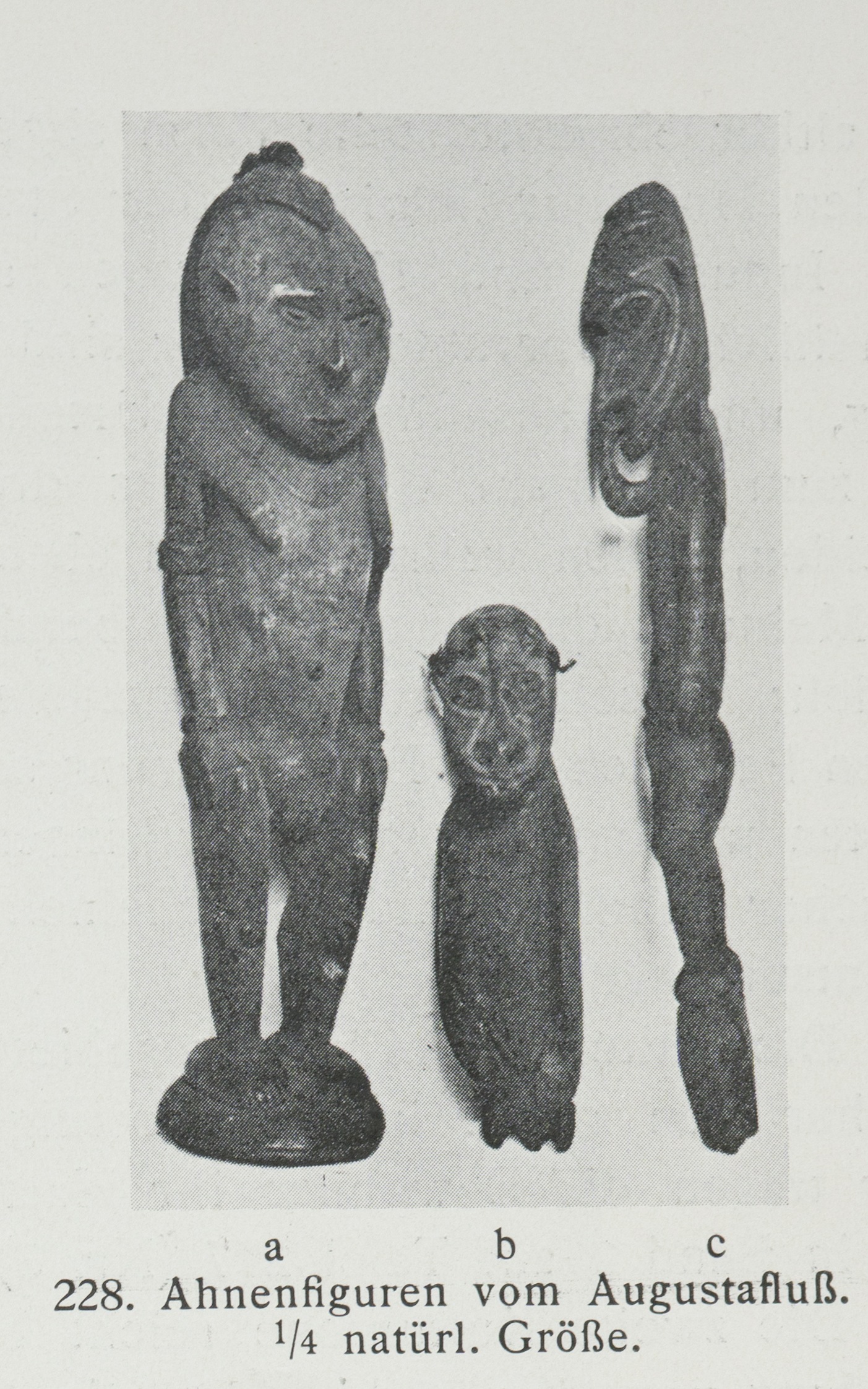
Flying Fox Sculpture
Lower Sepik River, Papua New Guinea
19th century
Wood, pigments, H. 25cm
Provenance:
Collected in situ before 1910, probably by Richard Neuhauss
Walter Bondy, Berlin and Paris, ca. 1930
Property of an English Trust
Lance Entwistle, London
Private collection, New York, collection number EN 181
Publication:
Richard Neuhauss, Deutsch Neu-Guinea, Band 1, 1911, n° 228.b
Walter Bondy, view of the collection in his apartment, c. 1930
Price:
Sold
The Neuhauss-Bondy Flying Fox Sculpture
Dating back to the 19th century, this this magnificent flying fox sculpture from the Lower Sepik River area is both on of the first collected and first published of its type and was over the last 100 years part of some of the most acclaimed and remarkable collections of Oceanic art.
Neuhauss’ Deutsch Neu-Guinea
Published in 1911 by the German medical scientist Richard Neuhauss, Deutsch Neu-Guinea Band 1 is one of the very early and important publications on the art of Papua New Guinea. Although only a few objects are depicted, the book gives an important over-view on pre-contact art from the Huon-Gulf and the Sepik River; the latter was visited by Neuhauss in 1910 together with Otto Schlaginhaufen, who was himself a noted field-collector of Oceanic art.
Included into this seminal publication is this magnificent flying fox sculpture from the lover Sepik River area, as can be seen on the picture on the left. Most likely collected by Richard Neuhauss himself around 1910, it was the German artist and renowned collector of Oceanic art Walter Bondy who acquired the sculpture in the years following the publication. Bondy, who is until today highly estimated for his deep understanding of quality, was based in Berlin and in Paris and it is in a picture of his Parisian home were the flying fox sculpture can be seen in c. 1930.
Whereas Neuhauss did not offer much information about its ritual function and also Otto Reche – when discussing a flying fox figure of the same type published in Der Kaiserin-Augusta Fluss of 1913– could only speculate about the ritual function of these objects, it was the American anthropologist Albert Lewis who revealed their ritual meaning in his field diaries. Used as a love charms that could magically make someone fall in love with the owner of the object, they are potent and at the same time poetic objects.
